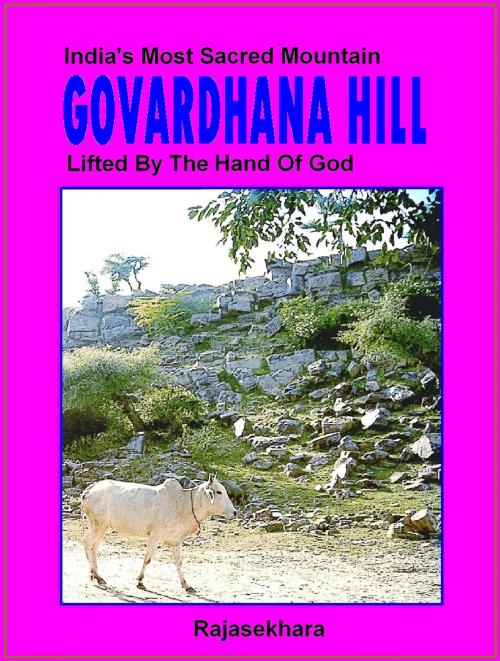Govardhana Hill: India’s Most Sacred Mountain - Lifted By The Hand Of God
Nonfiction, Religion & Spirituality, Reference, History| Author: | Rajasekhara | ISBN: | 9781310321115 |
| Publisher: | Rajasekhara | Publication: | May 21, 2015 |
| Imprint: | Smashwords Edition | Language: | English |
| Author: | Rajasekhara |
| ISBN: | 9781310321115 |
| Publisher: | Rajasekhara |
| Publication: | May 21, 2015 |
| Imprint: | Smashwords Edition |
| Language: | English |
Govardhana Hill is mentioned in numerable Vedic scriptures as being India’s most sacred mountain. Although there are a number of sacred mountains like Kailash, Gandhamadana, Mandara, and Sumeru, Govardhana was lifted by the lotus hand of Lord Krishna in order to protect the Vrajavasis from Indra’s rainclouds of devastation. The Vedas say that Govardhana should be envisioned in two ways, firstly as being an incarnation of Lord Krishna, the Supreme Personality of Godhead, who declared Himself to be non-different from the mountain, and secondly as the greatest devotee of Lord Krishna, because of the service the mountain provided to Lord Krishna during His pastimes on Earth, by providing all the necessities of life such as grass for grazing Krishna’s beloved cows, fresh mountain streams for providing drinking water, and a variety of fruit trees, wild berries, roots, vegetables and herbs for the cowherd men and their families to subsist on. The mountain also provided many caves where the cowherd boys could find shelter from the scorching sun and where Lord Krishna and the gopi milkmaids of Vraja could enjoy many wonderful pastimes of transcendental love. Because Lord Krishna is non-different from Govardhana Hill, the rocks found on Govardhan are worshiped as deities of Krishna and in fact do not need to be installed on the altar by Vedic rituals of prana-pratistha and fire sacrifice, such rocks known as Govardhana-shilas are considered self-manifested deities and immediately worshipable. Scattered around Govardhana Hill are over sixty important holy places including many important temples and over twenty sacred kundas like Radha-kunda, Govinda-kunda, and Apsara-kunda
Govardhana Hill is mentioned in numerable Vedic scriptures as being India’s most sacred mountain. Although there are a number of sacred mountains like Kailash, Gandhamadana, Mandara, and Sumeru, Govardhana was lifted by the lotus hand of Lord Krishna in order to protect the Vrajavasis from Indra’s rainclouds of devastation. The Vedas say that Govardhana should be envisioned in two ways, firstly as being an incarnation of Lord Krishna, the Supreme Personality of Godhead, who declared Himself to be non-different from the mountain, and secondly as the greatest devotee of Lord Krishna, because of the service the mountain provided to Lord Krishna during His pastimes on Earth, by providing all the necessities of life such as grass for grazing Krishna’s beloved cows, fresh mountain streams for providing drinking water, and a variety of fruit trees, wild berries, roots, vegetables and herbs for the cowherd men and their families to subsist on. The mountain also provided many caves where the cowherd boys could find shelter from the scorching sun and where Lord Krishna and the gopi milkmaids of Vraja could enjoy many wonderful pastimes of transcendental love. Because Lord Krishna is non-different from Govardhana Hill, the rocks found on Govardhan are worshiped as deities of Krishna and in fact do not need to be installed on the altar by Vedic rituals of prana-pratistha and fire sacrifice, such rocks known as Govardhana-shilas are considered self-manifested deities and immediately worshipable. Scattered around Govardhana Hill are over sixty important holy places including many important temples and over twenty sacred kundas like Radha-kunda, Govinda-kunda, and Apsara-kunda















